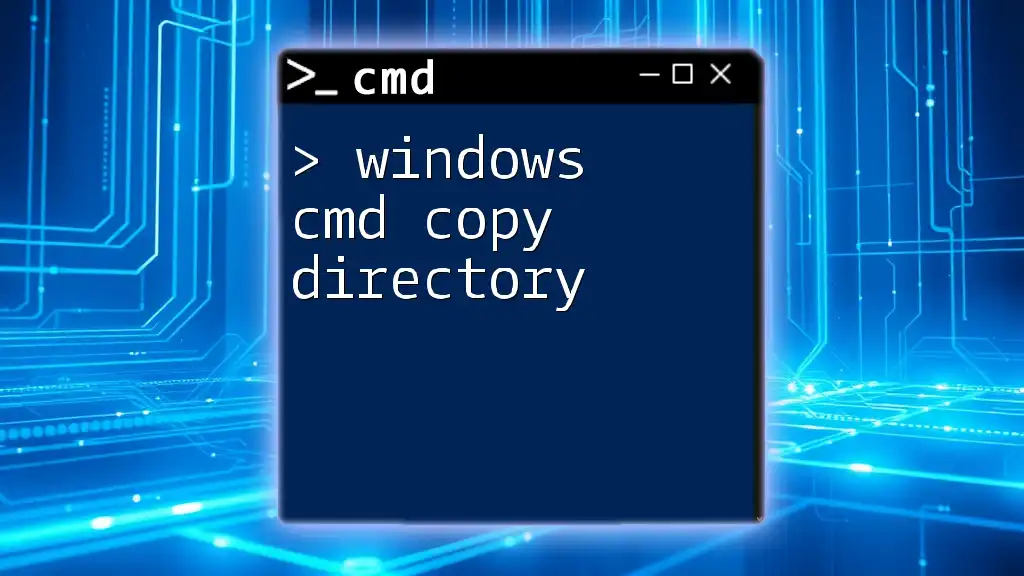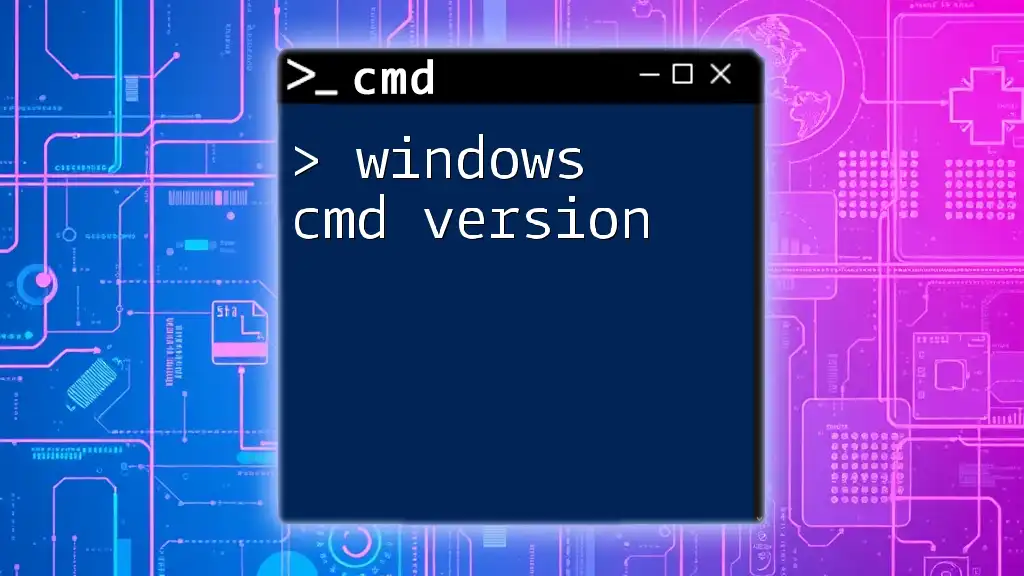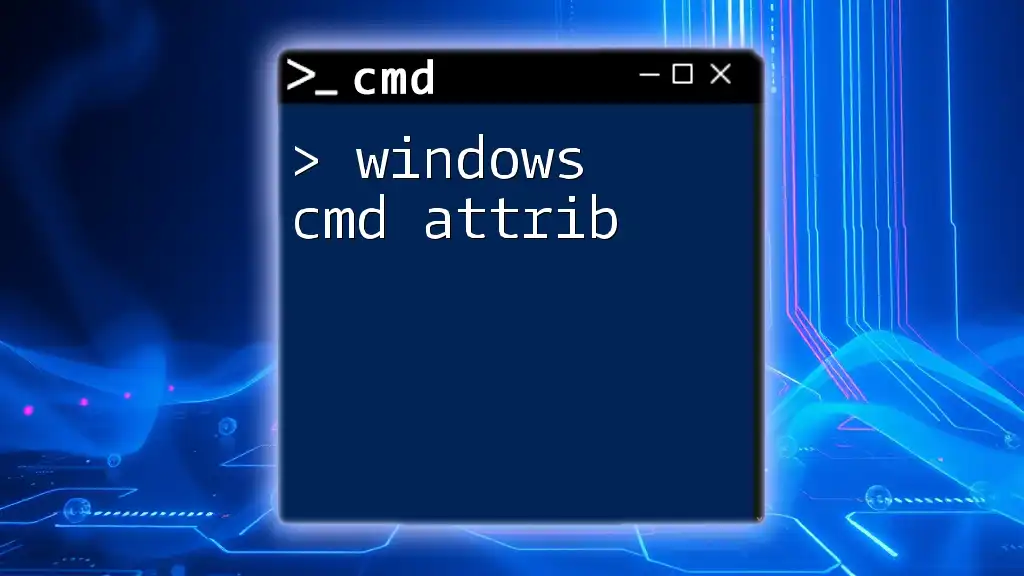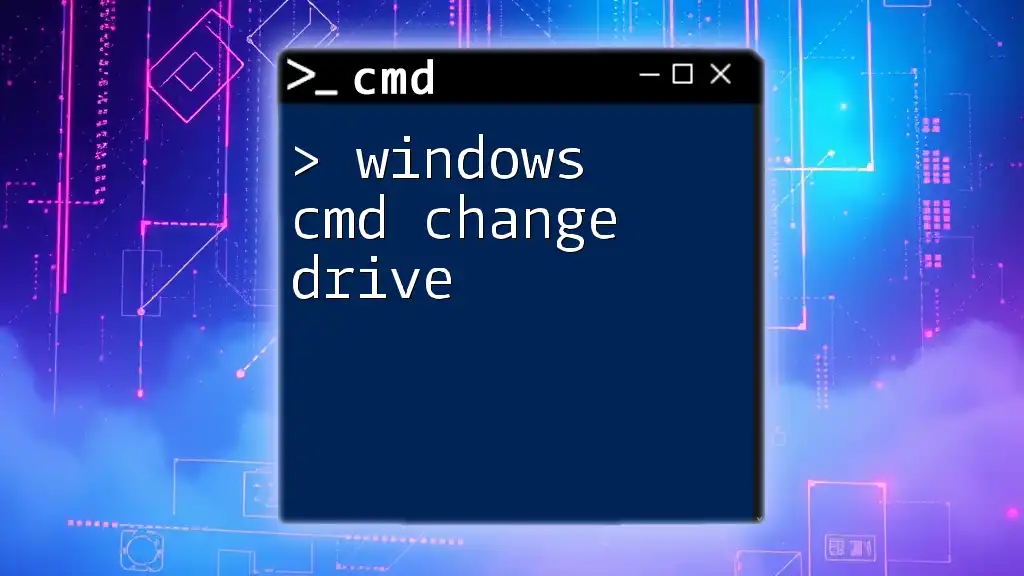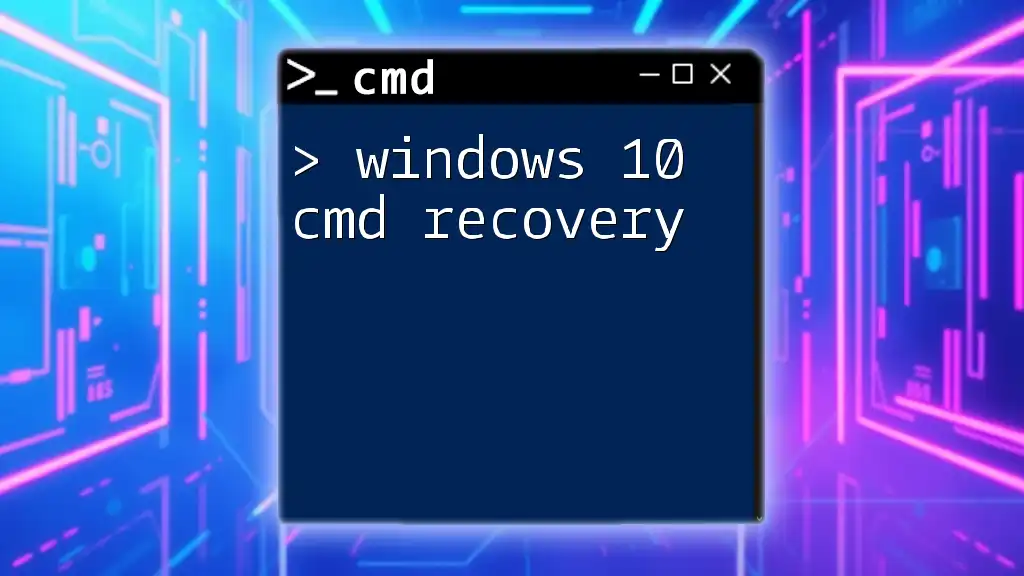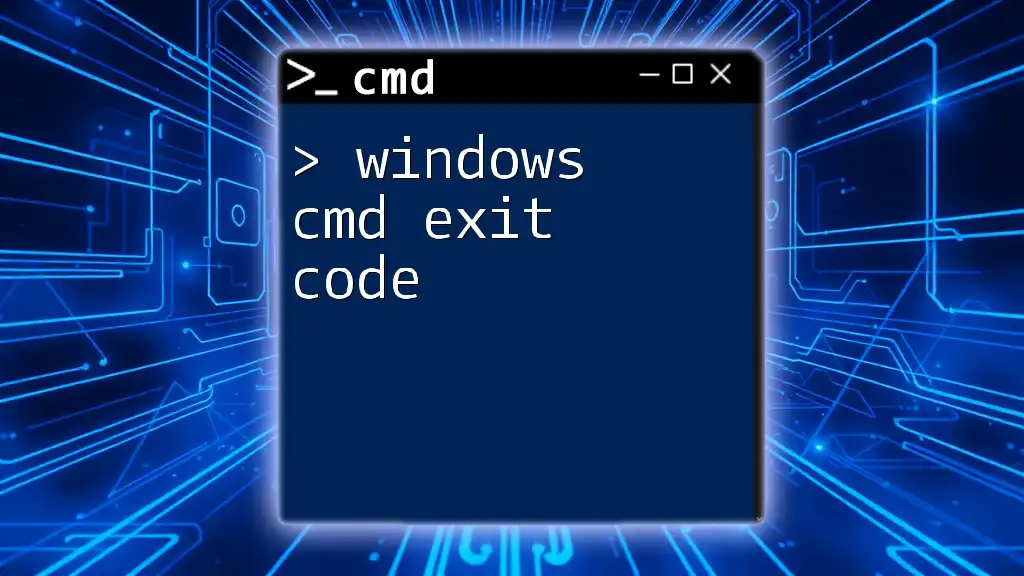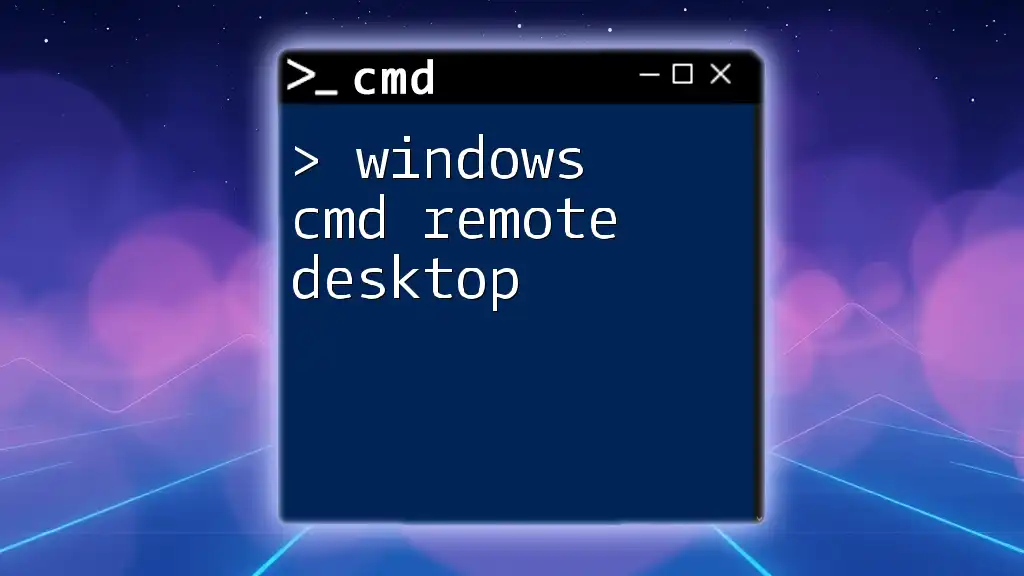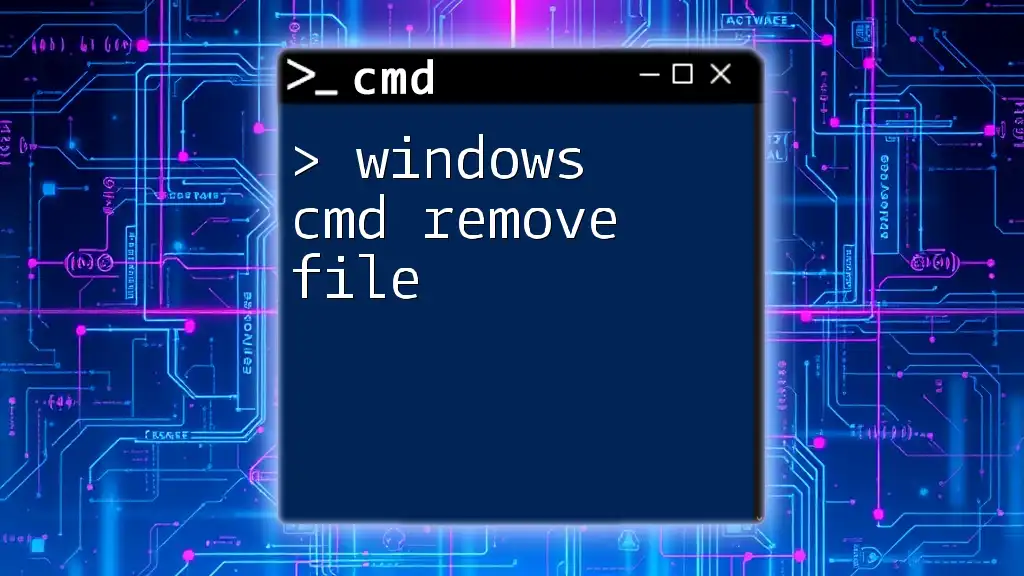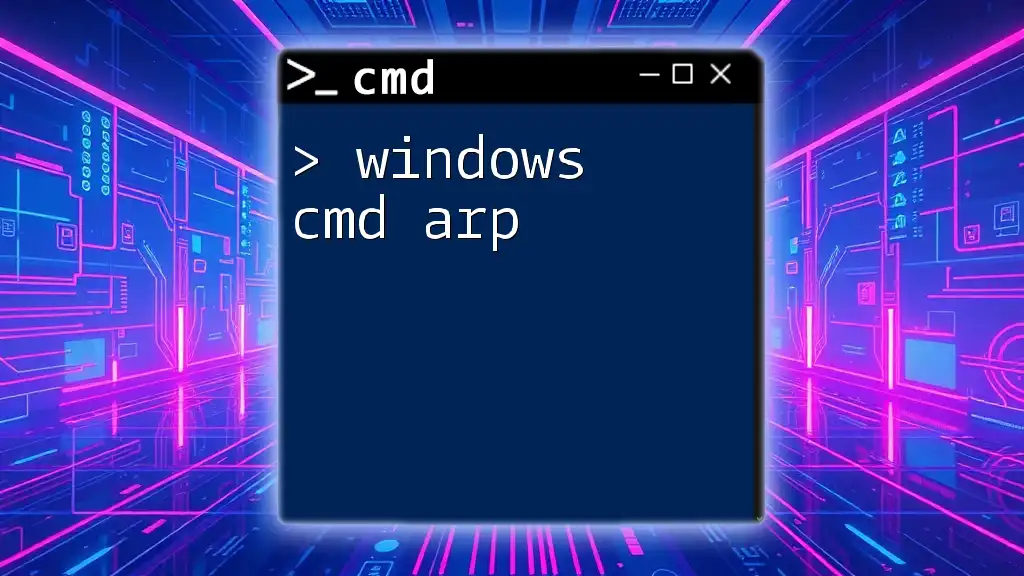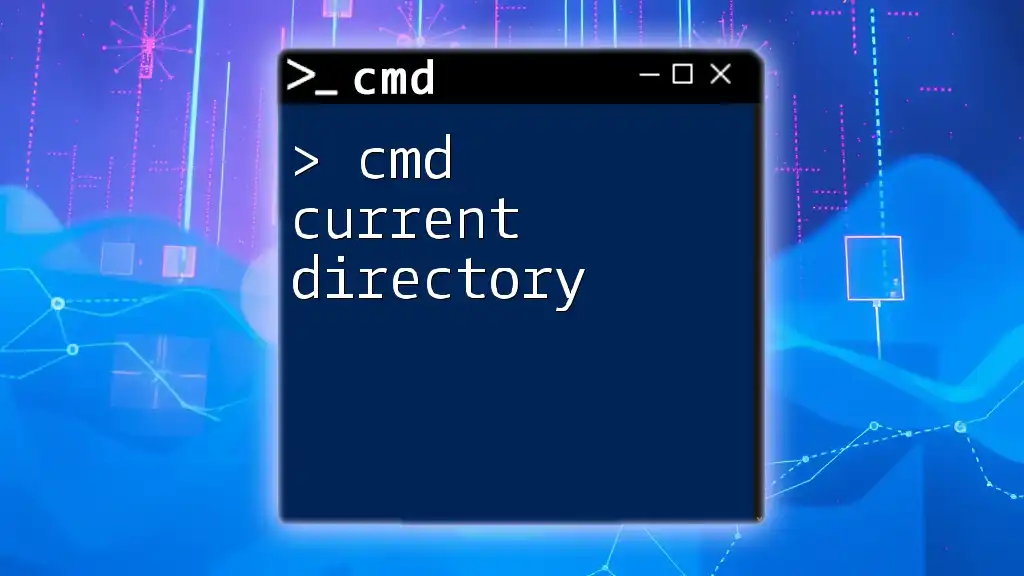To copy a directory and its contents in Windows Command Prompt, you can use the following command:
xcopy "C:\source_directory" "D:\destination_directory" /E /I
In this command, `C:\source_directory` is the path of the directory you want to copy, and `D:\destination_directory` is where you want to copy it to, with `/E` ensuring that all subdirectories are copied, including empty ones, and `/I` indicating that the destination is a directory.
Understanding Windows CMD Commands
What is CMD?
Command Prompt (CMD) is a command-line interpreter available in most Windows operating systems. It allows users to execute commands to interact with the system, automating tasks, and accessing advanced functionalities. Mastering CMD can significantly enhance your efficiency and control over Windows, especially for repetitive tasks.
Why Use CMD for Copying Directories?
Using CMD for copying directories has several advantages over graphical user interfaces (GUIs). CMD allows for:
- Speed: Copying directories through CMD is often faster than using Windows Explorer, particularly for large batches of files.
- Automation: It opens the possibility to automate files and directory management through scripts.
- Batch Processing: CMD enables you to execute multiple commands in a single go, making it ideal for advanced users.
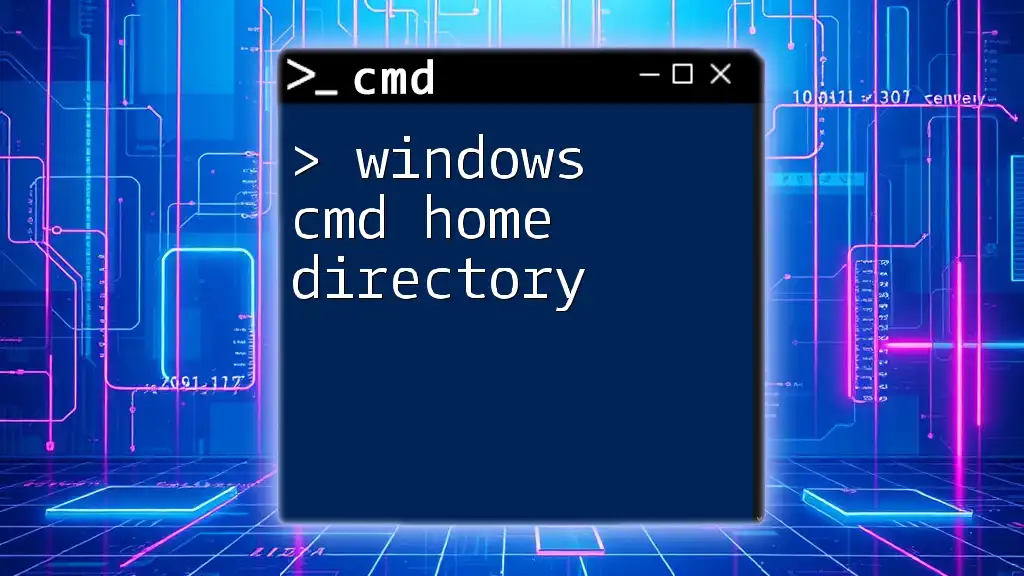
Basic Syntax of the Copy Command in CMD
Overview of the COPY Command
The basic structure of the CMD copy command is as follows:
`COPY [source] [destination]`
It is essential to understand the syntax of this command to utilize it effectively.
Difference Between COPY and XCOPY
While the COPY command can handle basic file copying tasks, it lacks the capability to copy entire directories with their subdirectories. For advanced copying tasks, including copying folders, XCOPY is the preferred command, as it provides additional options and functionality.
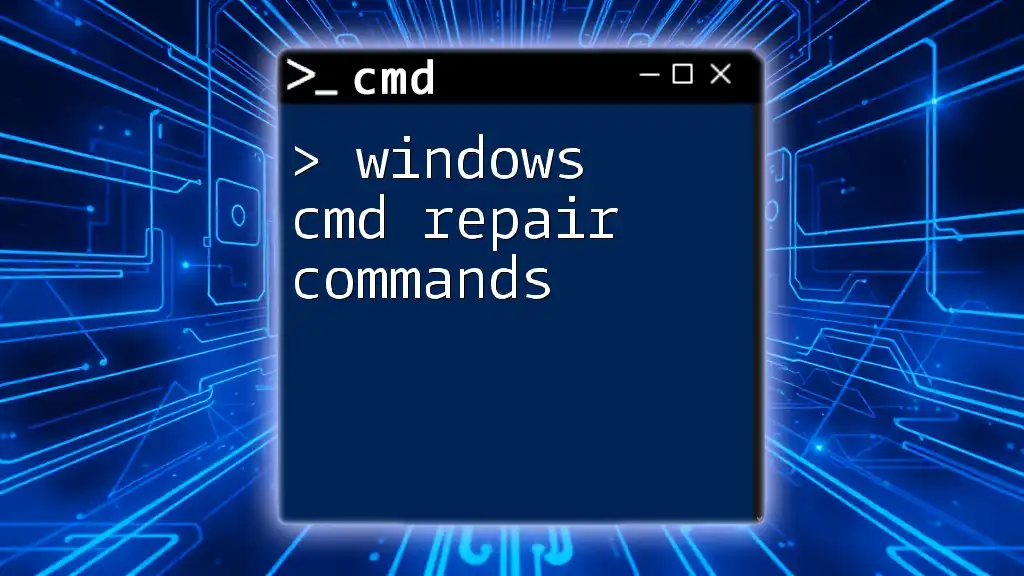
Using Windows CMD to Copy Directories
Basic Command to Copy a Directory
To copy a directory and its contents using CMD, you would typically use:
xcopy source_dir destination_dir
This command tells the system to copy everything from the source_dir to the destination_dir.
Code Example: Copying a Folder
An example command might look like this:
xcopy C:\SourceFolder C:\DestinationFolder /E /I
In this example:
- C:\SourceFolder is the path of the folder you want to copy.
- C:\DestinationFolder is where you want to place the copy.
- /E indicates that all subdirectories should be copied, including empty ones.
- /I tells the command to treat the destination as a directory if it does not exist.
Common Switches Used with XCOPY
When using XCOPY, various switches enhance functionality. Some of the most commonly used ones include:
- `/E`: Copies all subdirectories, including empty ones. This is crucial when you want an exact replicate of the folder structure.
- `/I`: If the destination does not exist, this switch assumes it is a directory, streamlining the process.
- `/Y`: Suppresses the prompt that asks for confirmation when overwriting existing files in the destination.
Using CMD to Copy a Folder with Attributes
In some cases, you may want to preserve file attributes (e.g., read-only status). You can achieve this with an additional switch:
xcopy source_dir destination_dir /E /I /K
Here, /K copies the attributes, ensuring that important file properties are retained after the copy.

Detailed Steps for Copying a Directory in Windows CMD
Opening the Command Prompt
Before you can use the `xcopy` command, you need to access the Command Prompt. Here’s how:
- Press Windows Key + R to open the Run dialog.
- Type cmd and press Enter.
Step-by-Step Copy Process
Once you have CMD open, you can enter the `xcopy` command. For example, to copy a folder:
- Navigate to the folder you want to copy by typing `cd path_to_the_folder`.
- Enter the command with the necessary flags.
Verifying the Copy
After executing the copy command, it’s essential to verify that the files have been copied correctly. You can use the following CMD commands:
- `dir`: Lists files in the directory to check contents.
- `tree`: Displays a graphical representation of the directory structure, making it easy to see if the copying was successful.
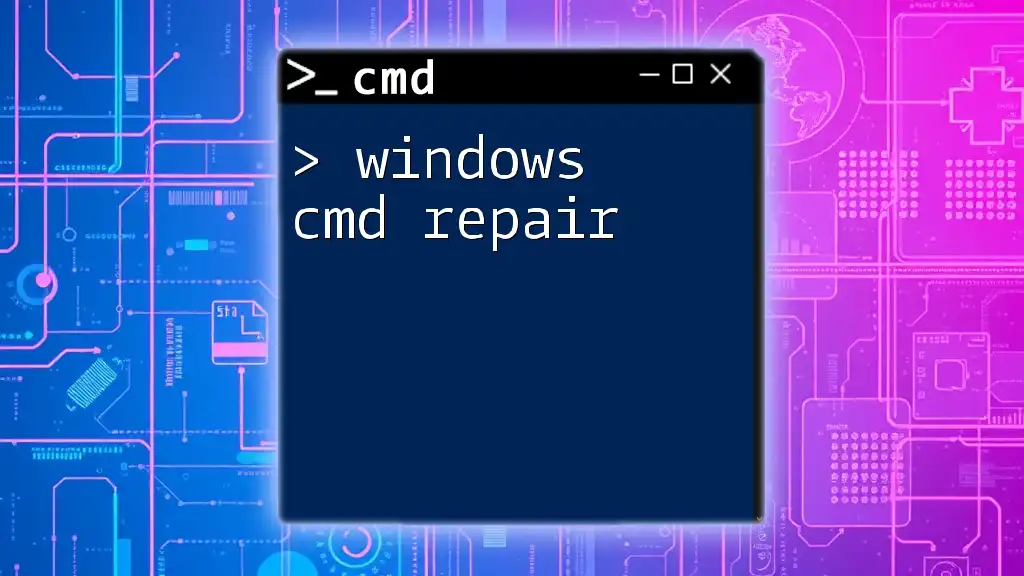
Troubleshooting Common Issues
Permission Denied Errors
One common issue when attempting to copy directories is encountering permission denied errors. This typically occurs due to insufficient permissions for the source or destination directories. To resolve this:
- Ensure you have administrative privileges.
- If necessary, run CMD as an administrator by right-clicking the CMD icon and selecting Run as administrator.
Directory Not Found Errors
If you receive a "Directory Not Found" error:
- Double-check the paths you entered in your command.
- Ensure there are no typos or missing directories in the specified paths.
Handling Large Directories
Copying large folders can be tricky due to timeouts or system limitations. To enhance performance, consider using the /J switch with your XCOPY command, which uses unbuffered I/O, like this:
xcopy source_dir destination_dir /J
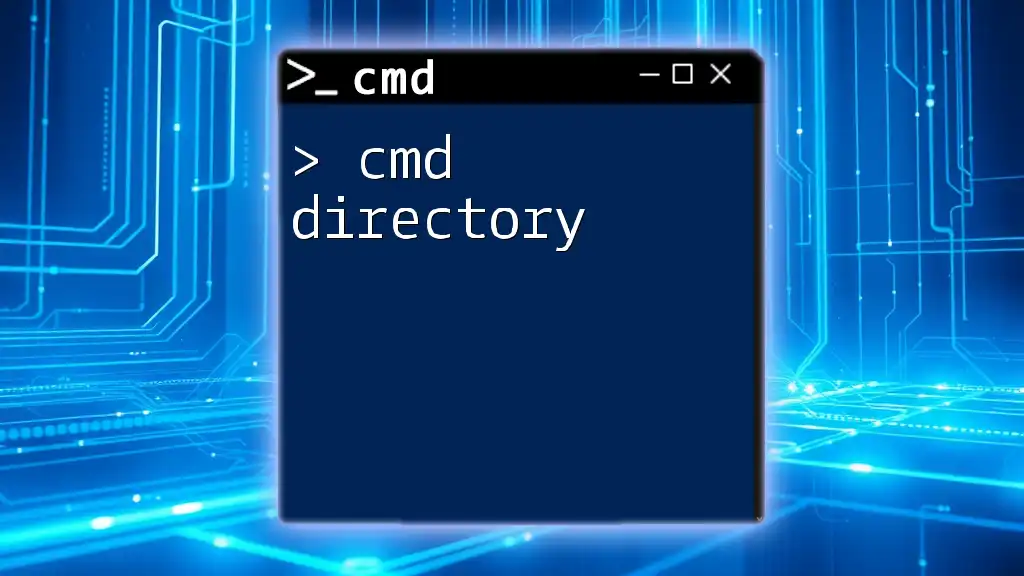
Advanced CMD Copying Techniques
Using Robocopy for Enhanced Functionality
For more advanced directory copying tasks, consider using Robocopy (Robust File Copy), which is included in Windows Vista and later. Its syntax is:
robocopy source_dir destination_dir
Robocopy is particularly useful for its resilience against interruptions and can handle more complex copying scenarios.
Example of Robocopy
To mirror a directory, you can use Robocopy as follows:
robocopy C:\SourceFolder C:\DestinationFolder /MIR
Here, /MIR mirrors the source directory, ensuring that the destination is an exact copy, including files and subfolders.
Automating Directory Copying with Batch Files
For users who frequently copy directories, creating a batch file can save time. A simple batch file might include commands like:
@echo off
xcopy C:\SourceFolder C:\DestinationFolder /E /I
This script can be saved with a `.bat` extension and executed whenever you need to perform the copy operation.
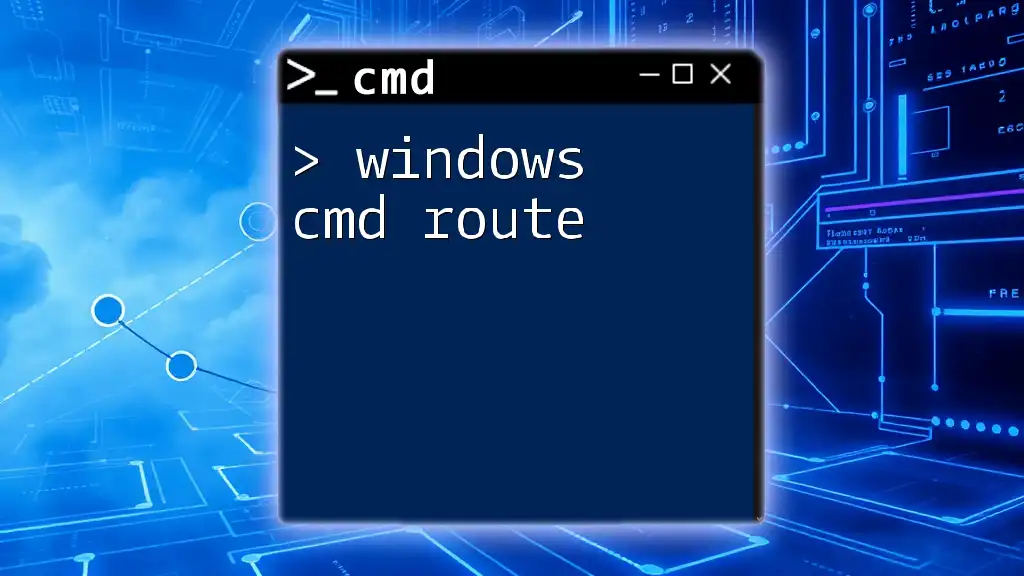
Conclusion
Recap of the CMD Copy Directory Process
In summary, mastering the use of Windows CMD to copy directories provides users with enhanced efficiency and control over file management tasks. From the basic `xcopy` command to advanced options like `Robocopy`, CMD offers powerful capabilities beyond what typical GUI tools can accomplish.
Additional Resources for Learning CMD
To continue enhancing your CMD skills, explore various online coding resources, tutorial sites, and forums dedicated to mastering command line operations.

Call to Action
Now that you have a comprehensive understanding of how to use Windows CMD to copy directories, it's time to practice! Try executing these commands in your own Windows environment, and consider subscribing to our updates for more CMD tips and tricks to improve your command-line skills.

